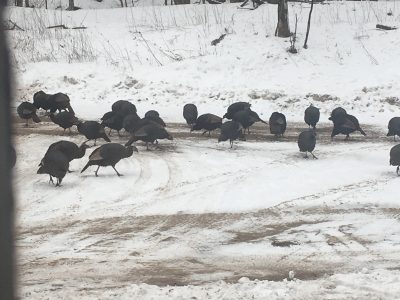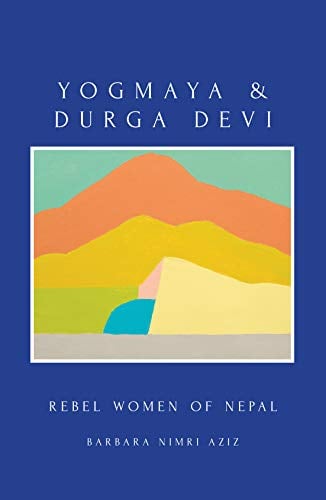Menacing Winter Wonder

All Global Research articles can be read in 51 languages by activating the Translate Website button below the author’s name (desktop version)
To receive Global Research’s Daily Newsletter (selected articles), click here.
Follow us on Instagram and Twitter and subscribe to our Telegram Channel. Feel free to repost and share widely Global Research articles.
***
Those images from the December blizzard engulfing Buffalo in upstate New York were shocking. Hard to grasp the reality. That ghostliness was not only from the icy, white shroud covering everything. There were also the deaths of citizens who ventured outside, or who simply couldn’t get back home.
That calamity was especially unsettling for those of us who live hardly four hours’ drive from there. By contrast. Here in Delaware and Sullivan counties we were covered by an appealing two-inch layer of snow. Whatever cold reached us from Buffalo was discomfitingly bearable. We carried on with our daily affairs, simply taking care to cover up with an extra layer of wool and ensuring we had a good supply of heating oil.
Yet, we were aware that, notwithstanding the unpredictability of global climate changes, our Catskill winter had hardly begun. We faced another two months with below zero temperatures, high fuel bills, frozen pavements, the toil of clearing our driveways.
About this weekend freeze, luckily we’d been forewarned. Media and utility companies sent out bulletins: stock up on needs; keep faucets open; remain indoors. As the temperature began to drop, even the ubiquitous pickup trucks with their sturdy snowplows in front were stilled.
My vigil began in the assumed safety of indoors. It was hard to relax; while regularly feeding the wood stove, I peered warily into the night. The then layer of snow from last week’s light fall glistened in the sharp rays of moonlight.
Then, from the north west, the wind arrived in a sudden whoosh. It was forecast to last for 24 hours! That’s unusually long, I thought. If it were to rain, we’d be transformed into that spectral Buffalo scene.
The temperature continued to drop, the wind to increase. At times, throughout the evening I heard a loud clap outside. In the sky. If some tree had fallen close to the house, I wasn’t about to check. A long, aching crack of a falling, frozen tree rose in the nearby woods, echoing into the dark. I waited for the crash, but was distracted by another sound, a whistling across the walls of my house. Was the wind finding slivers of space to force that cold inside? And then what?
The walls around me groaned as the storm beat at them. I went from room to room inspecting for cracked windows, wondering how I might seal anything found broken. Another clap exploded somewhere above the house! Had something fallen on the roof, maybe smashed the car.
Although I knew the forecast warned the temperature would continue dropping for another 24 hours, I repeatedly checked my phone’s weather app– -19 C, -20 C, -24 C. It didn’t subside in the morning nor throughout Friday! Such fierce wind combined with these temperatures was new for me, even after a childhood in snowbound, cold Canadian winters.
My main worry was a power cut. Not unusual in winter, and common in such high winds. I readied three flashlights and charged up my phone.
I would not sleep soundly because of that wind, also because I set my alarm every two hours to replenish the wood stove. (I had calculated that it would need sixteen good-sized logs, one for every hour until I could venture out to the woodpile.)
Morning light finally arrived, but the temperature still stood at minus 24 C. It seemed an act of mercy that the wind hadn’t downed any electric lines. Not yet! By 10 a.m. the sun offered a hint of warmth, flowing through windows onto the carpets. The wind continued howling. The road beyond Beaverkill was empty. But the forecast announced the storm would ease after six hours.
Late afternoon, I spotted two pickups speeding along the road on the far side of the valley. Closer to the house, wild turkeys poked at the gravel. It seems we’d turned a corner.
*
Note to readers: Please click the share buttons above. Follow us on Instagram and Twitter and subscribe to our Telegram Channel. Feel free to repost and share widely Global Research articles.
Barbara Nimri Aziz whose anthropological research has focused on the peoples of the Himalayas is the author of the newly published “Yogmaya and Durga Devi: Rebel Women of Nepal”, available on Amazon.
She is a regular contributor to Global Research.
All images in this article are from the author
“Yogmaya and Durga Devi: Rebel Women of Nepal”
By Barbara Nimri Aziz
A century ago Yogmaya and Durga Devi, two women champions of justice, emerged from a remote corner of rural Nepal to offer solutions to their nation’s social and political ills. Then they were forgotten.
Years after their demise, in 1980 veteran anthropologist Barbara Nimri Aziz first uncovered their suppressed histories in her comprehensive and accessible biographies. Revelations from her decade of research led to the resurrection of these women and their entry into contemporary Nepali consciousness.
This book captures the daring political campaigns of these rebel women; at the same time it asks us to acknowledge their impact on contemporary feminist thinking. Like many revolutionaries who were vilified in their lifetimes, we learn about the true nature of these leaders’ intelligence, sacrifices, and vision during an era of social and economic oppression in this part of Asia.
After Nepal moved from absolute monarchy to a fledgling democracy and history re-evaluated these pioneers, Dr. Aziz explores their legacies in this book.
Psychologically provocative and astonishingly moving, “Yogmaya and Durga Devi” is a seminal contribution to women’s history.


